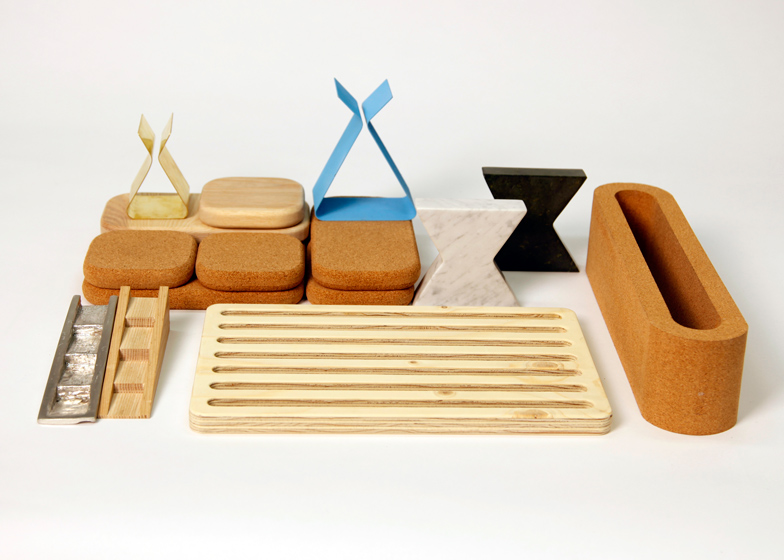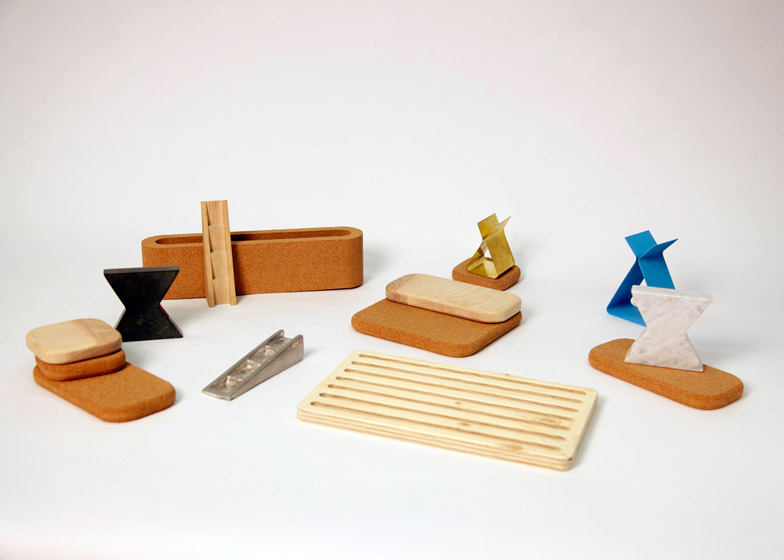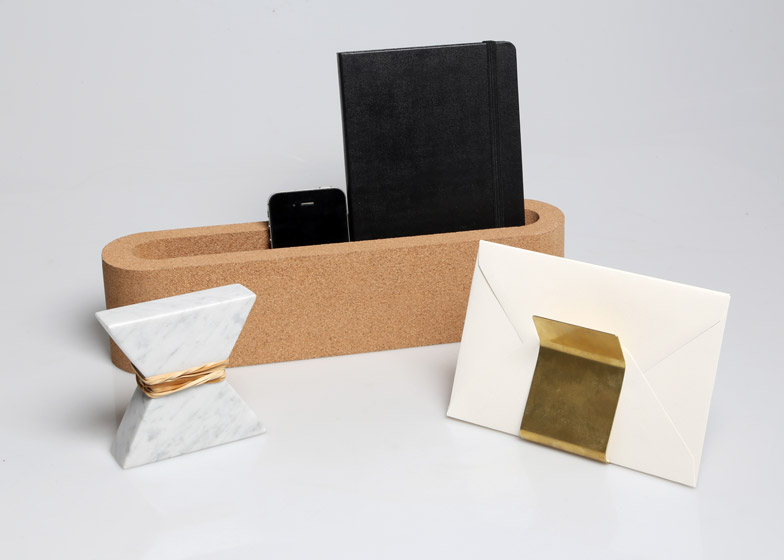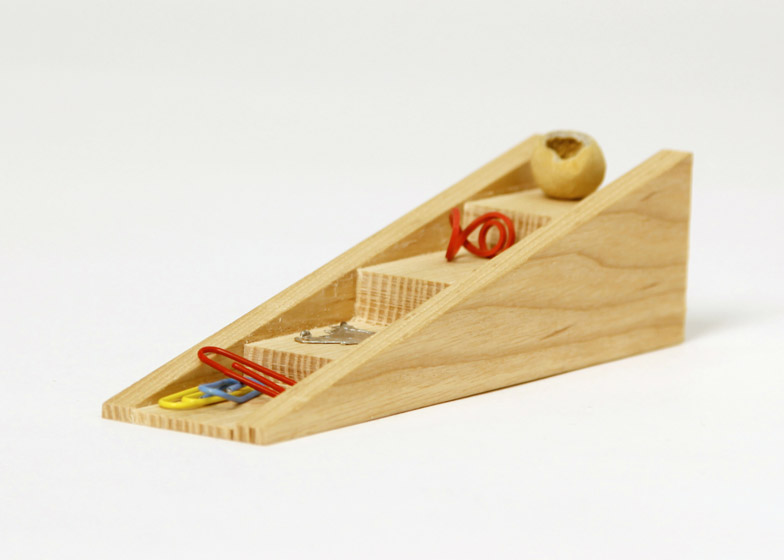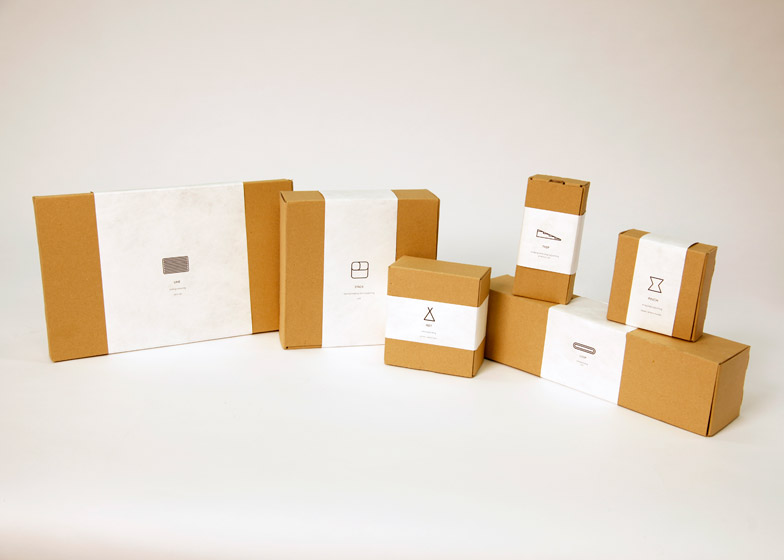Central Saint Martins graduate Bruno Schillinger combined randomly selected characteristics to create a collection of desktop products with functions dictated by their forms (+ slideshow).
Bruno Schillinger wanted to design a series of objects that a user could suggest functions for, rather than specifying how they should be appropriated and then seeing them used for another purpose anyway.
"The project was fundamentally inspired by observations of people misusing objects and their remarkable ability to appropriate objects instinctively," Schillinger told Dezeen.
Each small object in the Unidentified collection was created by selecting a card at random from each of four categories: shape, material, action and detail.
Schillinger chose one or two cards from the four piles and used their instructions to inform what he designed.
Material chosen included marble, concrete, resin, brass, jesmonite, ash and cork.
"The cards set the parameters of the design and allowed the design process to be dictated by serendipity rather than rationality," said Schillinger. "The selected material not only has an impact on the look and feel of each object, but also the function it suggests."
The resulting ambiguous products included cork and wood platforms with rounded edges, a plywood slab with grooves in the surface, angled chunks of wood and metal with stepped indents, and metal sheets bent so they pinch together at the top.
The items are packed in simple brown cardboard boxes with white paper sleeves, giving no hint as to what they should be used for.
Unidentified formed part of Schillinger's graduate project from London arts institution Central Saint Martins, which was presented at London's Business Design Centre for the second part of the New Designers exhibition earlier this month.

